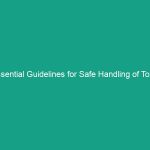Good Morning Team!
Today, we are going to discuss an incredibly important topic: Essential De-energization Verification: Ensure Electrical Circuits Are Dead. Understanding how to properly verify the de-energization of electrical circuits is crucial for your Safety and the Safety of your colleagues. This Toolbox Talk will equip you with the knowledge and practices to ensure that we all go home safe at the end of the day.
Understanding Essential De-energization Verification
De-energization verification refers to the process of confirming that electrical circuits have been completely de-energized before any work is performed. It is a critical step in ensuring that our work Environment is safe. Without proper verification, workers are at risk of electrical shock, burns, or worse.
One common misconception is that simply turning off a switch is enough. However, many workers overlook potential sources of energy such as capacitors, backfeed from generators, or other energized parts. This misunderstanding can lead to serious accidents.
Key Hazards, Risks, and Safety Considerations
Working on de-energized circuits is not just a good practice; it is a requirement for safety. Some key Hazards associated with failing to properly verify de-energization include:
- Electrical Shock: Contact with live wires can result in severe injuries or fatalities.
- Arc Flash: An arc flash can occur when an electrical fault happens, potentially leading to serious injuries.
- Burns and Injuries: Even a moment of negligence can result in catastrophic Burns or injuries.
Ignoring these safety protocols can have real-world consequences, including workplace accidents, legal issues, and loss of productivity. It is not just about compliance; it is about protecting lives.
Best Practices, Procedures, & Actionable Advice
To ensure electrical circuits are dead, follow these essential steps:
Step 1: Identify the Circuit
Before starting any work, identify the circuit you will be working on. Make sure to consult the electrical panel and any schematics that are available.
Step 2: Turn Off Power
Turn off the circuit breaker or disconnect the power source. Always use the correct breaker and ensure that you are following the lockout/tagout (LOTO) procedures.
Step 3: Verify De-energization
Use a properly rated voltage tester to check for electrical current. Ensure you test all phases of the circuit. Remember, testing the circuit must be done with the tester in good condition and rated for the circuit voltage.
Step 4: Ground the Circuit
After confirming that the circuit is de-energized, it is good practice to ground the circuit. This step provides an additional layer of safety by ensuring that any residual charge is safely discharged.
Step 5: Document the Process
Always document the de-energization process. Record the time, the person who performed the verification, and any pertinent details. This can help in case of investigations or audits.
Real-life Example
Consider the incident at a local manufacturing plant where an employee sustained severe electrical burns because he assumed a circuit was de-energized after flipping a switch. He did not use a voltage tester and did not follow LOTO Procedures. This incident serves as a critical reminder of the importance of thorough de-energization verification.
Regulations, Standards, and Compliance
Compliance with safety Regulations is not just a formality; it is a legal and ethical responsibility. The Occupational Safety and Health Administration (OSHA) has clear guidelines on Electrical Safety, including the necessity for de-energization verification. Understanding these regulations can help protect you and your colleagues in the workplace.
Additionally, following NFPA 70E (National Fire Protection Association) standards regarding electrical safety in the workplace is crucial. Non-compliance can result in fines, legal issues, and, most importantly, injuries.
Employee Engagement & Discussion
Now, I want to open the floor for discussion. Can anyone share experiences where safety protocols were not followed, and what were the outcomes? What challenges do you face when verifying de-energization? Your insights are invaluable and can help us all learn and improve.
Conclusion & Key Takeaways
In summary, ensuring that electrical circuits are dead through essential de-energization verification is a critical component of Workplace Safety. Always remember to:
- Identify the circuit and turn off the power.
- Verify de-energization using a voltage tester.
- Ground the circuit for added safety.
- Document your verification process.
By following these practices, you not only protect yourself but also your colleagues. Let’s make safety our top priority every day. Thank you for your attention and commitment to creating a safe work environment. Stay safe!


